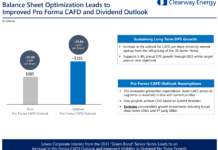India had been trying to get a corporate bond market going for 15 years – search “growing India corporate bonds” and you’ll find papers on the subject from the Reserve Bank of India, Bank of International Settlement and others scattered over past years.
The latest Indian 5 year plan has this as a priority – and has green finance as a priority in a separate section.
India has a particular need: a miniscule local corporate bond market means restricted financing options for business, including for renewable and energy efficient building developers – diversity with financing options helps drive down costs of finance.
India also needs suitable instruments – e.g. corporate bonds – to attract some of the vast amount of capital currently going into buying gold and inflating the property market – a misallocation of domestic savings if ever there was one.
Corporate bond markets need help from governments to get started. Among other things, they usually need a stimulatory dose of government guarantees and credit enhancements to kickstart the market. (We think there’s room to grow an equivalent asset-backed securities market as well, but more on that another time).
That’s why this bond issued by Suzlon Energy Limited (Bombay: SUZLON) is so exciting! The US dollar denominated. 5 year bond carries a 4.97% coupon, and was provisionally rated, Baa2 by Moody’s.
One swallow does not a summer make, but it’s a great precedent. India’s 5 year plan should support much more of this, by simply bringing together the corporate bonds and green finance strands.
The Suzlon bond is backed by a Stand-By Letter of Credit (SBLC) from the State Bank of India. The bonds will be listed on the Singapore stock exchange (SGX). Suzlon says it’s the first ever USD credit enhanced bond from India.
Suzlon is a “pure-play” wind energy company; we see their corporate bonds as fully-blown climate bonds.
BTW, where companies only have part of their business in qualifying sectors, we encourage them to issue corporate “asset-linked” bonds, similar to the European Investment Bank’s Climate Awareness Bond, or last year’s Air Liquide Health Bond. If the relevant assets were verified as qualifying (like wind farms) and there was accountability around use of proceeds, credit enhancements should be available. Oh, and the Climate Bonds Standard provides a means to verify with confidence.
Sean Kidney is Chair of the Climate Bonds Initiative, an “investor-focused” not-for-profit promoting long-term debt models to fund a rapid, global transition to a low-carbon economy.








